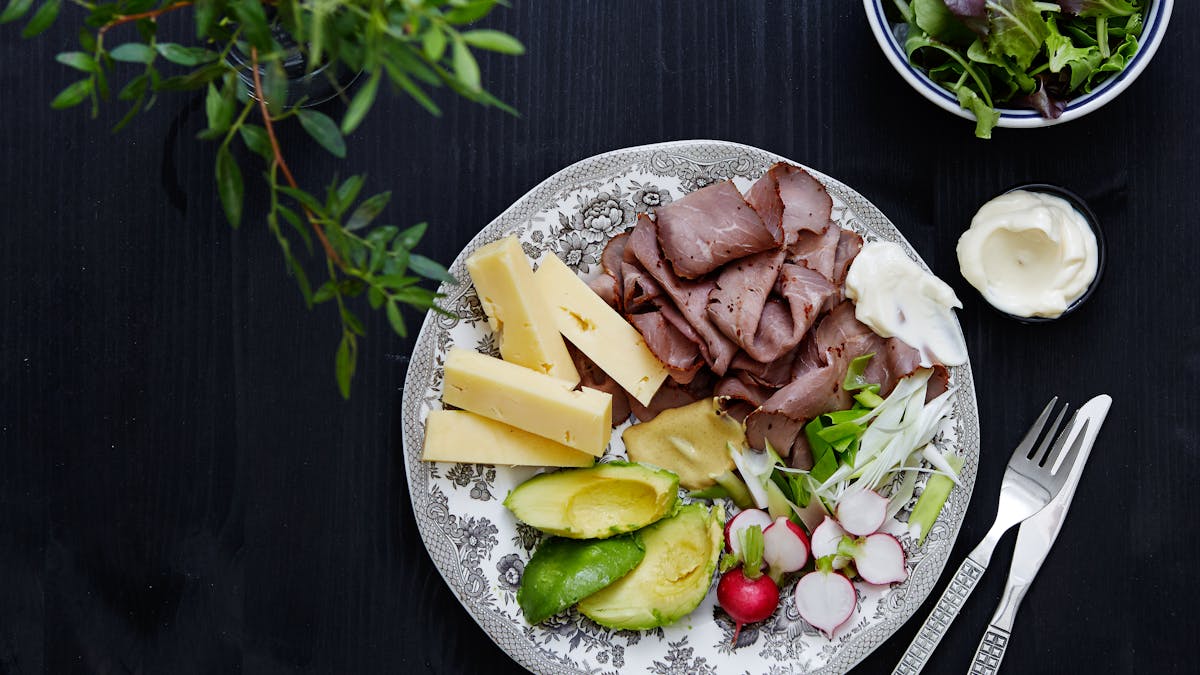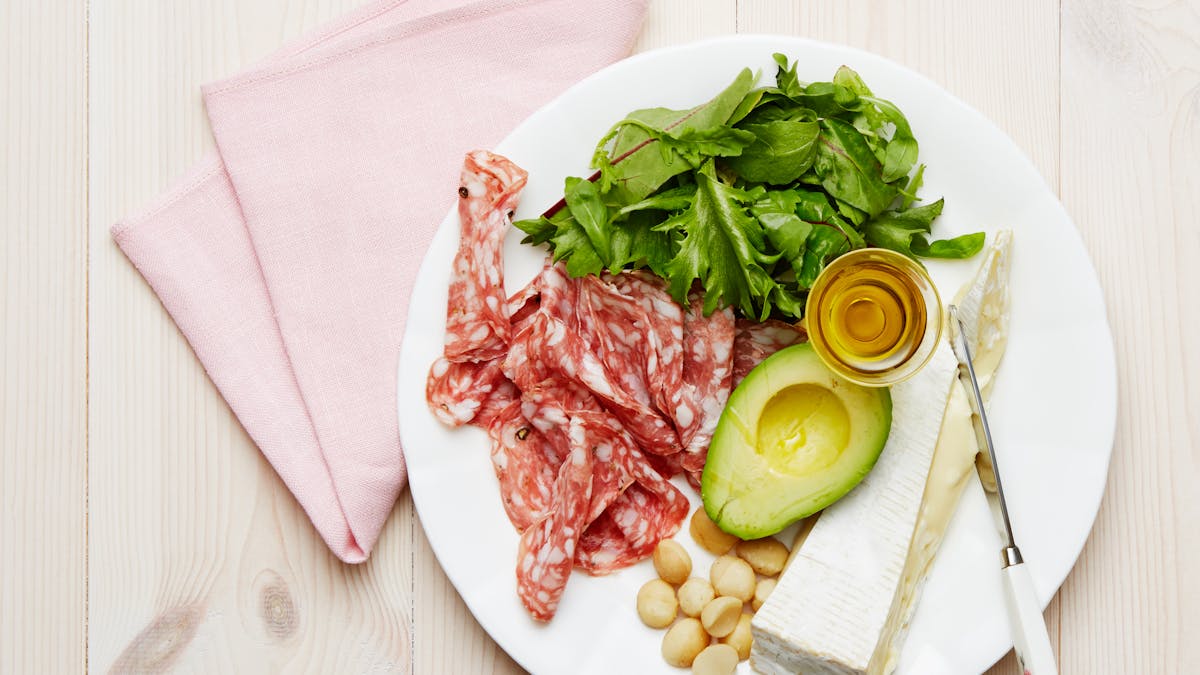Learning to cook keto in the time of coronavirus
Many novice cooks are finding themselves suddenly stove-side because of coronavirus quarantines. Fortunately, low-carb meals are simple meals. It’s easy to master the basics.If takeout has been your go-to way to make dinner, don’t worry: you can do this! Feeding yourself and your family is pretty straightforward when you keep it simple.
For a great primer on how to stock your fridge, freezer, and pantry check out our post: Six tips for low-carb COVID-19 preparedness. Once you have food on-hand, let’s get cooking.
1. Magic formula: Protein + veggies = meal
Do you have a frying pan and a stove? If the answer is yes, you can make tasty meals, again and again. Some people call these meals “one-skillet wonders.” We call them easy and nutritious!
Several recipes on our site are simple skillet meals. Pork chops with green beans. Salmon with asparagus. Chicken with broccoli. You’ll get the idea.
Fry the protein until cooked through — set it aside and fry the vegetables until tender — and then, put the protein back in the pan to warm. Or vice versa. Add fat for cooking needs, for flavor, and to provide the energy you need to stay satisfied until your next meal.
You can also cook two veggies, or add a simple salad to make your meal more varied.
Our meal planning idea generator has lots of possibilities for proteins, veggies, and healthy fats. The potential combinations go on and on.
For a visual version of this, scroll through the options on these mix-and-match keto plates. Once you decide on what’s for dinner, you can click on the picture for simple cooking instructions.
No-cook healthy meals
You don’t have to cook to make filling, nutritious meals at home. Instead, assemble a plate of delicious real food — as is. Here are a few examples from our recipe collection for inspiration:
Eggs are super easy
Eggs are a perfect keto staple, and they’re great for a quarantine. They’re relatively inexpensive, keep for weeks, and are fast and easy to cook. Build a meal around fried or hard-boiled eggs paired with vegetables, cheese or other low-carb items from your pantry. Or, check out our egg-centric recipe collection for more inspiration.
Leftovers are your friend
Another way to manage home keto and low-carb meals, without cooking all the time, is to make larger portions and reheat the leftovers. Our meal plans do this: every dinner is tomorrow’s lunch. Do this in other ways by making a triple batch of something and eating it for dinner Monday, Wednesday, and Friday.
There are lots of ways to use leftovers creatively and get more variety, so you don’t get bored. Today’s roast chicken can be the main ingredient in tomorrow’s stir-fry, chef salad, or soup. See our planned leftovers worksheet for more ideas.
Soup is good food
Speaking of soup, almost anything in your fridge or pantry can make a yummy soup! In fact, there’s a famous fairytale, Stone Soup that tells that story.
Soup is a great way to use up bits of food that aren’t enough for a meal. Vegetables nearing their end can be chopped up and added to a pot of simmering water or broth. A leftover chicken carcass or a stripped ham bone makes a great stock base, as do any bones — beef, fowl, fish and more.
Parts of vegetables you would compost, such as broccoli or kale stalks, add nutrients and flavor. Just emulsify or strain out before serving. The trimmed dry ends of asparagus stalks also make a great addition to a soup stock (and are also best removed before serving).
Try our delicious broccoli cheddar soup or tomato basil parmesan soup or other soup recipes. But feel free to experiment. Google any ingredient and you will likely find a soup to use it in.
Most soups, stews, and chilis can also be made in big batches. Extras can be frozen or shared with friends and family who cannot shop for themselves. Just remember to follow the food safety tips, below, and label everything clearly before freezing.
2. Order basic equipment
If you haven’t been cooking recently, you may need some basic kitchen equipment. Here’s what to buy:
Top six must-haves
- Large skillet (preferably non-stick)
- Instant-read thermometer (for checking that meats are safely cooked)
- Sharp knife
- Oven mitts or pot holders
- Oven-safe baking/roasting dish
- Small pot or sauce pan
Other basics to consider
- Bowls (for mixing)
- Can opener
- Chopping board
- Grater
- Immersion blender (for pureeing vegetables and whipping sauces)
- Lettuce spinner
- Peeler
- Plastic wrap, bags, parchment paper, and foil
- Stock pot (for making soup and stews)
- Spiralizer (for cutting zucchini and other low-carb veggies into noodles)
- Spoons and spatulas (including non-stick-friendly versions)
- Storage containers
- Whisk
3. Food safety rules
Handling fresh ingredients is simple when you follow a few guidelines. That’s a good thing. With an overloaded medical system, the last thing anyone needs is a case of food poisoning.
Keep it clean
Wash your hands! Yes, you’ve heard this before. Clean hands are a must when handling food at any time, regardless of the coronavirus.
Keep surfaces clean, too. Counters and appliances can be wiped down with a weak solution of bleach and water. Equipment like pans, knives, and chopping boards must be thoroughly cleaned after each use, either in a dishwasher, or with a soap and hot water wash.
Thoroughly rinse your fresh produce before preparing it. By running it under cool water for 20 seconds, you’ll get any microbes or viruses off your vegetables before you peel or chop them.
Cook animal protein to the proper temperature
To avoid the risk of foodborne illness, it is crucial to cook meat, fish and eggs to a safe internal temperature. If you don’t have an instant-read thermometer, this is a “must-have” for food safety. And, it is worth every penny for taking the guesswork out of when your meat is just right, not overcooked.
The USDA advises the following minimum internal temperatures:
- Solid cuts of beef, pork, veal, and lamb — 145°F (63°C)
- Ground beef, pork, veal, or lamb — 160°F (71°C)
- Poultry (solid or ground) — 165°F (74°C)
- Fish and shellfish — 145°F (63°C)
- Eggs — 160°F (71°C)
Keep raw proteins away from other ingredients and cooked food
Store raw meat and fish in plastic in the refrigerator. Your main goal should be to avoid the chance of any fluid leaking and touching your other food.
Also, keep plates, cutting boards, and knives that have touched raw animal protein away from other ingredients and finished food.
Use a fresh plate for cooked hamburgers, not the same plate that you used to take the raw hamburger patties to the grill. If a knife or chopping board has been used to prepare raw meat, it must be thoroughly cleaned and dried before you use it for chopping vegetables.
Keep cold food below 40°F (4°C)
Food is only safe at room temperature for about 2 hours; even less if your room is warmer. So, get leftovers back into the fridge promptly.
If you have large amounts of food, the way to cool it without lowering the temperature of your freezer or fridge is as follows:
- Divide it into smaller containers.
- Let it cool until it can be handled but not more than 2 hours.
- Refrigerate or freeze.
Another way is to place a storage container in an ice bath and stir the contents to release the heat. This cools food quickly, even in larger batches.
For more detailed food safety information, please visit the USDA’s 10 tips: Be food safe.
4. Try simple cooking techniques
If you can follow instructions, you can cook. Don’t be intimidated. Recipes are simply step-by-step instructions. But sometimes they have terms you may not know. Here’s a simple how-to list for everyday cooking techniques to help you navigate recipes like a pro.
Bake: Preheat oven, and slide oven-proof dish in.
Boil: Add water to a pot and bring to a boil. Or, in the case of corn on the cob, bring water to a boil first, then add the corn.
Braise: Preheat a non-stick skillet. Add cooking fat, and brown or sear food over medium high heat. Add a liquid, like broth, wine or water. (It may splatter, so add a little at a time.) Reduce heat and simmer until liquid evaporates or add more liquid until food is done.
Broil: Place an oven-proof dish in a hot oven set to broil. Move the oven rack close to the top element and keep the oven door open (unless your style of oven requires that you close the door).
Dry sauté: Preheat a non-stick skillet. Then add food (with no added fat or liquid) and stir.
Grill: Cook on a gas or charcoal grill. (Frying or broiling are good substitutes.)
Roast: Preheat oven, and add food that has been coated with fat or oil. If you have a convection oven, it can be nice to use, but reduce heat about 25°F.
Pan-fry: Preheat either a non-stick skillet or a cast-iron skillet and fry food. Usually fat is added, but that is not necessary for chops and steaks. Not much stirring is needed; just flip once or twice.
Sauté: Preheat a non-stick skillet. Add cooking fat, and allow it to get hot. Add food and stir frequently, ensuring all sides and pieces cook evenly.
5. Stay calm and keto on
Remember, when fighting off unwanted illness, chronic stress is your enemy. Try not to let home cooking become a burden.
Ask for help when you need it. Enlist partners, children, or other houseguests in your shopping, cooking, and clean-up routines.
If take-out is an option in your area, consider working that into your schedule to create a regular break from cooking.
Exercise, get outside — especially on sunny days — and find joy in all the things that you can. Allow singing at the table if you dare. And don’t forget to seek out laughter, especially when dinner doesn’t turn out exactly as you planned.
More
Did you enjoy this guide?
We hope so. We want to take this opportunity to mention that Diet Doctor takes no money from ads, industry or product sales. Our revenues come solely from members who want to support our purpose of empowering people everywhere to dramatically improve their health.
Will you consider joining us as a member as we pursue our mission to make low carb simple?













